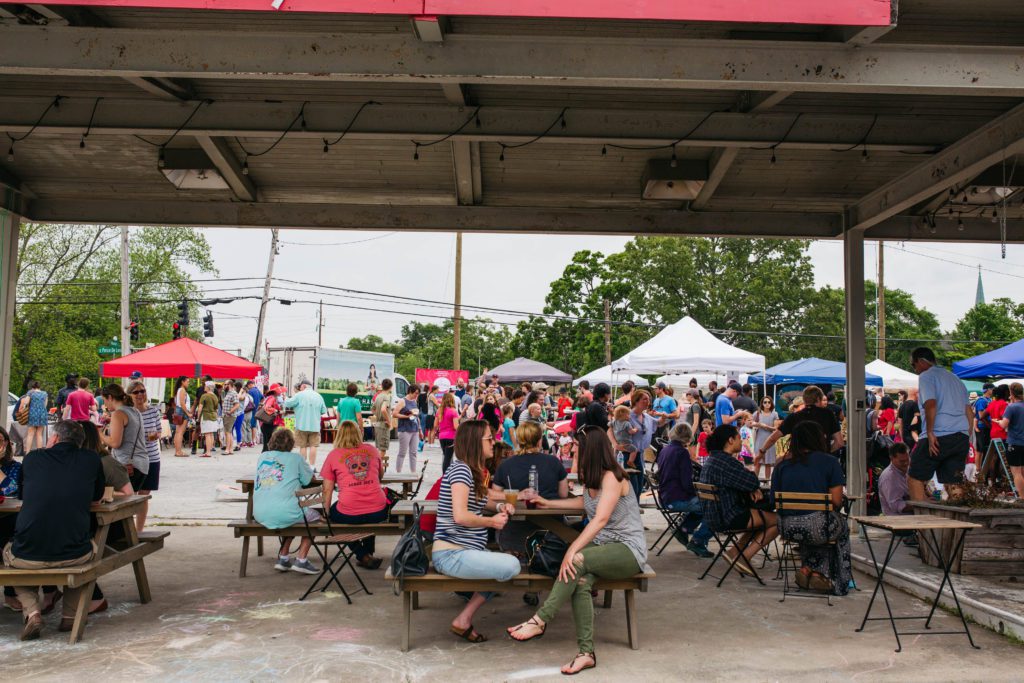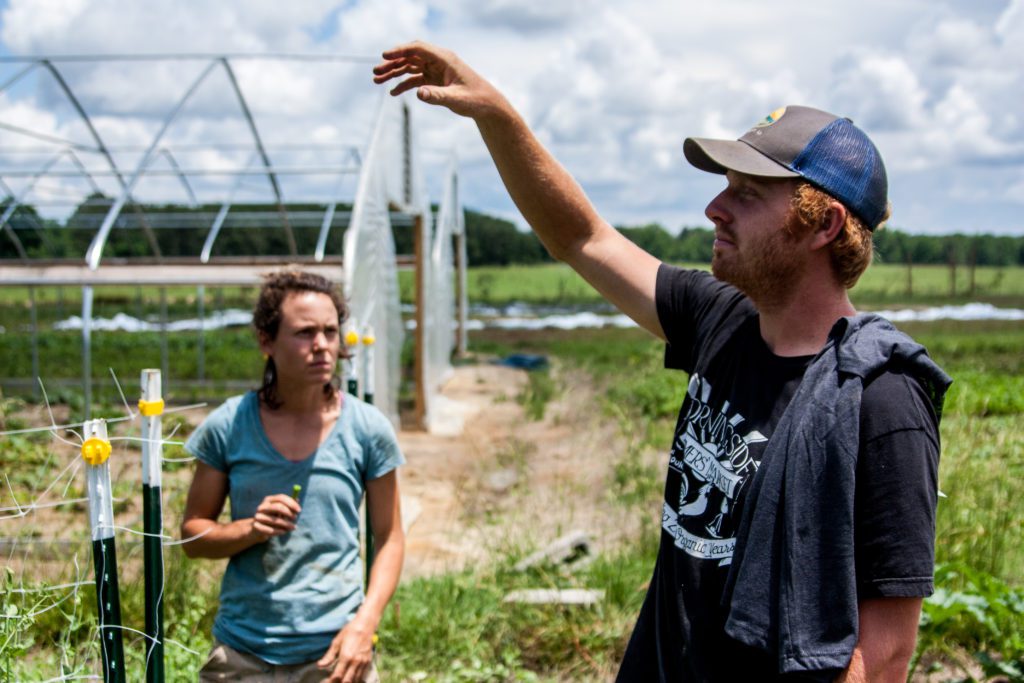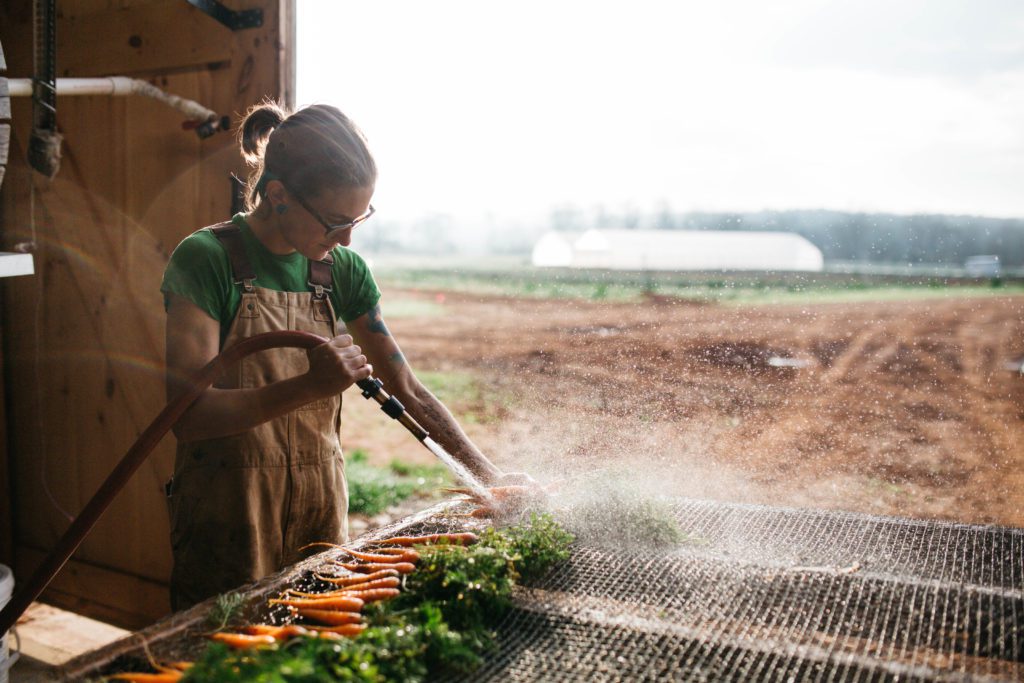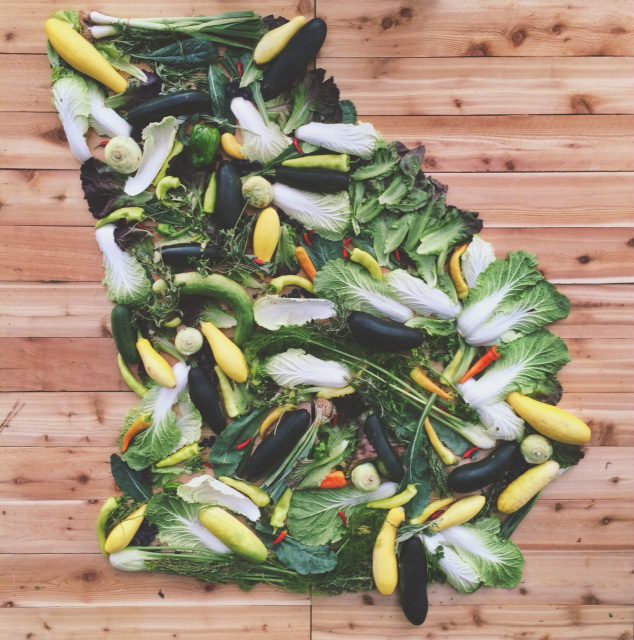When one of the top headlines from 2018 was a 13.7 billion dollar Amazon acquisition of Whole Foods, it’s easy to overlook more personally meaningful food numbers. But look again, Fresh Harvest customer! Your investment into the local food system grew substantially in 2018. Together, and for the first time in FH history, we spent over one million dollars on local food last year. This number represents a growing trend away from consumer apathy in our city and towards a more connected community; ultimately leading to more security for our local farmers, food artisans and our community as a whole.
While consumer purchases are not typically motivated by malevolence toward others, every dollar we spend does represent either an extension or suppression of our values. If we are actually thinking through the impact of our purchases, then what we choose to buy is a reflection of our personal ethical code. However, much of the time we prefer to not think on this philosophical level about the money we spend. We’d rather not ask questions that might lead to more questions. In other words, we become apathetic.

This tendency towards apathy is often catalyzed by globalism, which conveniently puts many layers between our decisions and their consequences. When we notice that most of the food we buy comes from thousands of miles away, crossing state and national borders, traveling on jets or sailing on freighters, we’ve probably stopped asking important questions.
But then there’s you: a consumer who thinks, who asks questions, and who cares about the impact of their dollar. The one million dollars we spent locally bears witness to those values. Speaking to Fresh Harvest customers, Michael Wall of Georgia Organics said, “You are participating in a revolutionary food system that is separate and distinct from a larger one that has a lot of problems with it. It is the beginning of our next, more long term, truly sustainable food system that has the potential to right a lot of wrongs in terms of environmental and economic disparity.” Your denial of apathy is actually making a difference.
But how does a dollar spent locally differ from a dollar spent elsewhere?

At its core, the local food movement begins and ends in the same place: with you, the consumer. It is your conscientious demand and financial investment that empowers this system to function. But those dollars you spend are far from charity. For those of us who consume local food, the personally realized benefits are manyfold, encompassing such irreplaceable gifts as better physical health, richer social connections, and the deep pleasure of a delicious meal made from fresh ingredients.
Responsible local sourcing also leaves consumers with a greater sense of mental well-being. We do not have to carry the mental weight of uncertainty about whether our purchase contributed to environmental destruction or any other form of injustice. Consuming local food sows meaning into the otherwise dull act of eating. This meaning stems primarily from the story of how it came to be, bringing us back to the land and the people who work it.

Together, in 2018, we invested in over 15 local organic farms and 50 food artisans. On average, these farms are located 67 miles from Atlanta, narrowing the USDA’s definition of local by over 300 miles, and thereby drastically slashing the food industry’s typically abominable carbon footprint. During one of last year’s annual crop-planning meetings, Ashley Rodgers of Rodger’s Greens and Roots Farm told us, “It’s difficult to run a business on a roller coaster ride of income. So, having a stable income from Fresh Harvest keeps our doors open. I can pay my employees every week and we can keep going from season to season.” This is hardly the case for many farmers in our country who struggle to stay afloat in more traditional food systems.
On average, farmers who sell into grocery stores through multiple distribution layers and middlemen wind up with a meager 7.8 cents for every dollar of produce sold. In contrast, we are proud to claim that for every dollar we’re paid, our producers and growers end up with over half of it.
If the value of a dollar can be determined by its collective benevolent impact on a community, then without a doubt, not every dollar is created equal. This million dollars has been spent; the cash is gone, but the return will echo in our communities for years to come. We are learning that eating is not just a short-term fix to a physical need, but a long-term investment into a bigger vision of holistic health, where our bodies are nourished, our economy is stabilized for future generations, the earth is healed, and our gratitude grows ever deeper.



